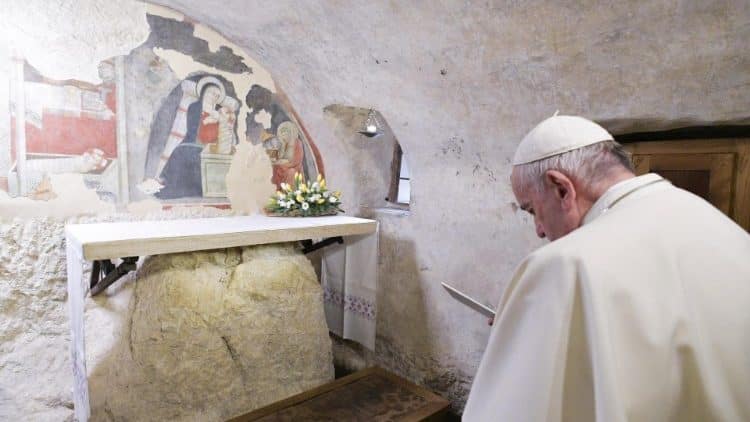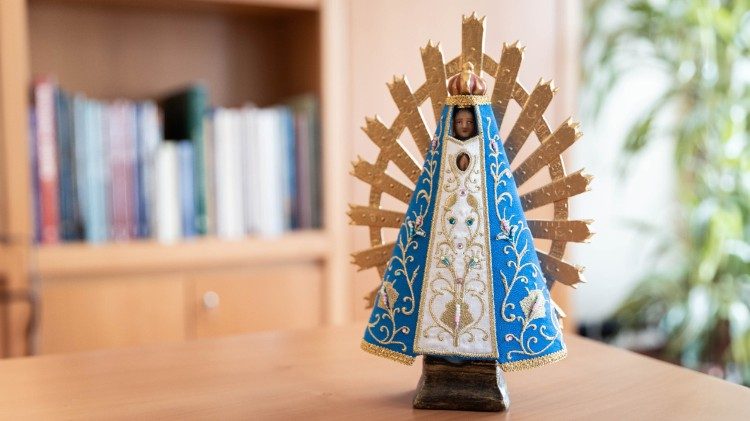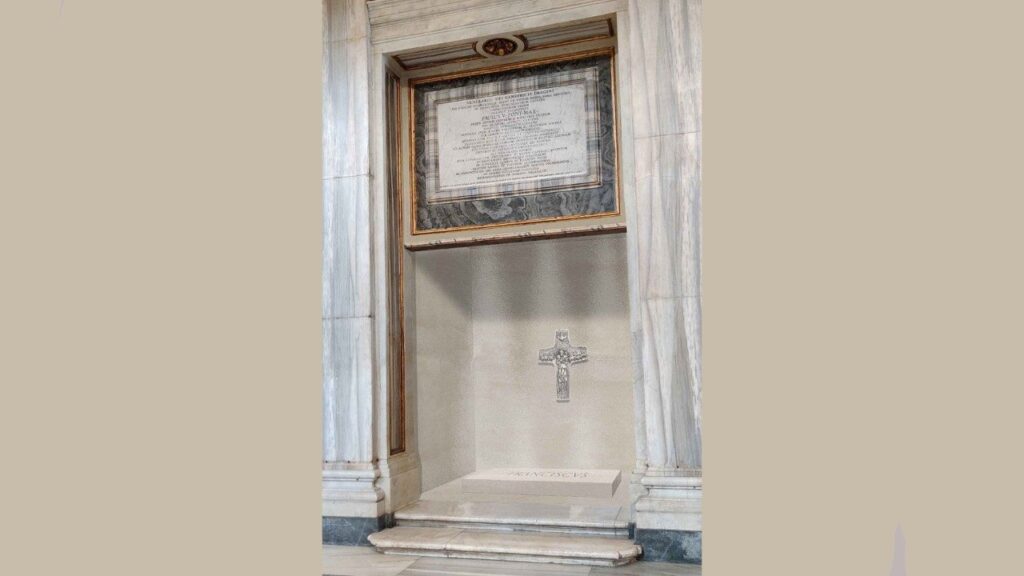Pope Francis: “In littleness they recognize the face of God”
Pope Francis on the Nativity scene

The Italian version of a book by Pope Francis is being released today, Tuesday 21 November: “Il mio presepe” (Christmas at the Nativity) has already been released in recent days in French, English, and Portuguese by the publishing house Piemme, in a co-edition with Libreria Editrice Vaticana (LEV).
The text contains a previously unpublished introduction by Francis and a series of texts, reflections, speeches, and homilies that the Pope has dedicated during his pontificate to the Nativity scene and the characters that populate it.
The full text of the introduction, dated 27 September 2023, can be found below:
INTRODUCTION
Twice I have gone to Greccio. The first time I went to learn about the place where St. Francis of Assisi invented the Nativity scene, something that also marked my childhood: in my parents’ house in Buenos Aires, this sign of Christmas always was put up, even before the tree.
The second time I gladly returned to that place, in the province of Rieti, to sign the apostolic letter Admirabile signum, on the meaning and significance of the Nativity scene today.
On both occasions I felt a special emotion emanating from the grotto, where a medieval fresco can be admired, one side of it depicting the night of Bethlehem, and the other depicting the night of Greccio.
The excitement of that sight prompts me to delve deeper into the Christian mystery that loves to hide within what is infinitely small.
Indeed, the Incarnation of Jesus Christ remains the heart of God’s revelation, although it is easily forgotten that its unfolding is so unobtrusive, to the point of going unnoticed.
Littleness, in fact, is the way to encounter God.
On the tombstone of St. Ignatius of Loyola, it is written, “Non coerceri a maximo, sed contineri a minimo, divinum est” (Not to be limited by the greatest, and yet to be contained in the tiniest—this is the divine). In short, one should not be frightened of the big things; one should go forward and take into account the smaller things.
This is why safeguarding the spirit of the Nativity scene becomes a healthy immersion in the presence of God manifested in the small, sometimes trivial and repetitive, everyday things. Knowing how, in order to understand and choose God’s ways, to renounce what seduces but leads down a bad path is the task we face. In this regard, discernment is a great gift, and we must never tire of asking for it in prayer. The shepherds in the manger are those who welcome God’s surprise and live in wonder at their encounter with him, adoring him: in littleness they recognize the face of God. Humanly we are all inclined to seek greatness, but it is a gift to know how to really find it: to know how to find greatness in that smallness that God so loves.
In January 2016 I met the youth of Rieti at the very haven of the Infant Jesus, just above the Nativity shrine. I reminded them, and everyone today, that on Christmas night there are two signs that guide us in recognizing Jesus. One is the sky full of stars. There are many of those stars, an infinite number, but among them all a special star stands out, the one that prompted the Magi to leave their homes and begin a journey, a journey that would lead them where they did not know. It happens the same way in our lives: at a certain moment some special “star” invites us to make a decision, to make a choice, to begin a journey. We must forcefully ask God to show us that star that draws us toward something more than our habits, because that star will lead us to contemplate Jesus, that child who is born in Bethlehem and who wants our full happiness.
On that night, made holy by the Savior’s birth, we find another powerful sign: the smallness of God. The angels point out to the shepherds a baby born in a manger. Not a sign of power, self-sufficiency, or pride. No. The eternal God is reduced to a helpless, meek, humble human being. God lowered himself so that we could walk with him and so that he could stand beside us, not above and far from us.
Awe and wonder are the two feelings that move everyone, young and old, before the Nativity scene, which is like a living Gospel overflowing from the pages of Holy Scripture. It is not important how the Nativity scene is set up; it can always remain the same or change every year; what matters is that it speaks to life.
The first biographer of St. Francis, Thomas of Celano, describes the Christmas night of 1223, whose eight-hundredth anniversary we celebrate this year. When Francis arrived, he found the crib with the hay, the ox, and the donkey. Before the Christmas scene, the people who flocked to the place manifested an unspeakable joy, never tasted before. Then the priest, at the manger, solemnly celebrated the Eucharist, showing the link between the Incarnation of the Son of God and the Eucharist. On that occasion, there were no figurines in Greccio: the Nativity scene was created and experienced by those who were present.
I am sure that the first Nativity scene, which accomplished a great work of evangelization, can also be an occasion today to summon forth awe and wonder. Thus, what the simplicity of that sign made St. Francis realize persists down to our own days as a genuine form of the beauty of our faith.
Related

Pope Francis Gifts a Statue of Our Lady of Luján to Gemelli and the Catholic University of the Sacred Heart
Exaudi Staff
25 April, 2025
2 min

Francis’s Tomb: A Legacy of Humility and Closeness
Exaudi Staff
25 April, 2025
4 min

The Family: A School of Love, Forgiveness, and Hope
Laetare
25 April, 2025
3 min

His Hope Does Not Die!
Mario J. Paredes
24 April, 2025
6 min
 (EN)
(EN)
 (ES)
(ES)
 (IT)
(IT)

